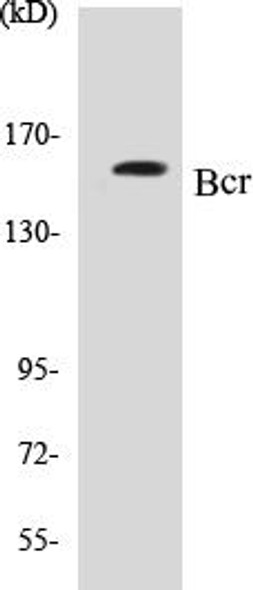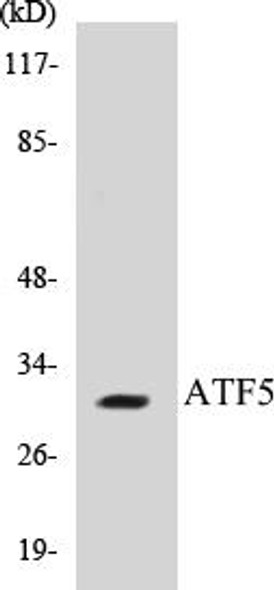Description
BIM Colorimetric Cell-Based ELISA Kit
The BIM Colorimetric Cell-Based ELISA Kit offered by AssayGenie is designed for the accurate detection of BIM (Bcl-2 interacting mediator of cell death) levels in cell lysates. This kit boasts high sensitivity and specificity, ensuring reliable and reproducible results for studying the role of BIM in cell death pathways.BIM is a key regulator of apoptosis, playing a critical role in determining cell survival or death. Dysregulation of BIM expression has been implicated in various diseases, including cancer, making it a valuable biomarker for research and drug development efforts.
With its user-friendly protocol and comprehensive instructions, the BIM Colorimetric Cell-Based ELISA Kit is an essential tool for researchers studying cell death mechanisms and exploring potential therapeutic targets. Order yours today to advance your research goals.
| Product Name: | BIM Colorimetric Cell-Based ELISA Kit |
| Product Code: | CBCAB00159 |
| ELISA Type: | Cell-Based |
| Target: | BIM |
| Reactivity: | Human, Mouse, Rat |
| Dynamic Range: | > 5000 Cells |
| Detection Method: | Colorimetric 450 nmStorage/Stability:4°C/6 Months |
| Format: | 96-Well Microplate |
The BIM Colorimetric Cell-Based ELISA Kit is a convenient, lysate-free, high throughput and sensitive assay kit that can detect BIM protein expression profile in cells. The kit can be used for measuring the relative amounts of BIM in cultured cells as well as screening for the effects that various treatments, inhibitors (ie siRNA or chemicals), or activators have on BIM.
Qualitative determination of BIM concentration is achieved by an indirect ELISA format. In essence, BIM is captured by BIM-specific primary antibodies while the HRP-conjugated secondary antibodies bind the Fc region of the primary antibody. Through this binding, the HRP enzyme conjugated to the secondary antibody can catalyze a colorimetric reaction upon substrate addition. Due to the qualitative nature of the Cell-Based ELISA, multiple normalization methods are needed:
| 1. | A monoclonal antibody specific for human GAPDH is included to serve as an internal positive control in normalizing the target absorbance values. |
| 2. | Following the colorimetric measurement of HRP activity via substrate addition, the Crystal Violet whole-cell staining method may be used to determine cell density. After staining, the results can be analysed by normalizing the absorbance values to cell amounts, by which the plating difference can be adjusted. |
| Database Information: | Gene ID: 10018, UniProt ID: O43521, OMIM: 603827, Unigene: Hs.469658 |
| Gene Symbol: | BCL2L11 |
| Sub Type: | None |
| UniProt Protein Function: | BIM: a pro-apoptotic member of the BCL-2 protein family. Interacts with other members of the BCL-2 protein family, including BCL2, BCL2L1/BCL-X(L), and MCL1, and act as an apoptotic activator. Its expression can be induced by nerve growth factor (NGF), as well as by the forkhead transcription factor FKHR-L1, which suggests a role in neuronal and lymphocyte apoptosis. Transgenic studies in the mouse suggested that this protein functions as an essential initiator of the apoptosis in thymocyte-negative selection. Nineteen alternatively spliced transcript variants of this gene have been reported. |
| UniProt Protein Details: | Protein type:Apoptosis Chromosomal Location of Human Ortholog: 2q13 Cellular Component: microtubule; mitochondrial outer membrane; extrinsic to membrane; endomembrane system; cytosol Molecular Function:protein binding; microtubule binding Biological Process: nerve growth factor receptor signaling pathway; positive regulation of apoptosis; apoptosis; cell-matrix adhesion; pigmentation during development; myeloid cell homeostasis; ear development; positive regulation of caspase activity; B cell apoptosis; cellular process regulating host cell cycle in response to virus; positive regulation of apoptosis by virus; mammary gland development; B cell homeostasis; positive regulation of neuron apoptosis; T cell homeostasis; kidney development; post-embryonic organ morphogenesis; caspase activation; spleen development; thymus development; in utero embryonic development; positive regulation of protein homooligomerization; male gonad development; positive regulation of cell cycle; regulation of organ growth; lumen formation; odontogenesis of dentine-containing teeth; DNA damage response, signal transduction resulting in induction of apoptosis; regulation of pigmentation during development; spermatogenesis; brain development |
| NCBI Summary: | The protein encoded by this gene belongs to the BCL-2 protein family. BCL-2 family members form hetero- or homodimers and act as anti- or pro-apoptotic regulators that are involved in a wide variety of cellular activities. The protein encoded by this gene contains a Bcl-2 homology domain 3 (BH3). It has been shown to interact with other members of the BCL-2 protein family and to act as an apoptotic activator. The expression of this gene can be induced by nerve growth factor (NGF), as well as by the forkhead transcription factor FKHR-L1, which suggests a role of this gene in neuronal and lymphocyte apoptosis. Transgenic studies of the mouse counterpart suggested that this gene functions as an essential initiator of apoptosis in thymocyte-negative selection. Several alternatively spliced transcript variants of this gene have been identified. [provided by RefSeq, Jun 2013] |
| UniProt Code: | O43521 |
| NCBI GenInfo Identifier: | 20336315 |
| NCBI Gene ID: | 10018 |
| NCBI Accession: | NP_619527.1 |
| UniProt Secondary Accession: | O43521,O43522, Q0MSE7, Q0MSE8, Q0MSE9, Q53R28, Q6JTU6 Q6T851, Q6TE14, Q6TE15, Q6TE16, A8K2W2, |
| UniProt Related Accession: | O43521 |
| Molecular Weight: | 22,171 Da |
| NCBI Full Name: | bcl-2-like protein 11 isoform 1 |
| NCBI Synonym Full Names: | BCL2-like 11 (apoptosis facilitator) |
| NCBI Official Symbol: | BCL2L11 |
| NCBI Official Synonym Symbols: | BAM; BIM; BOD |
| NCBI Protein Information: | bcl-2-like protein 11; bcl-2 interacting protein Bim; bcl-2-related ovarian death agonist; bcl-2 interacting mediator of cell death |
| UniProt Protein Name: | Bcl-2-like protein 11 |
| UniProt Synonym Protein Names: | Bcl2-interacting mediator of cell death |
| Protein Family: | Bcl-2-like protein |
| UniProt Gene Name: | BCL2L11 |
| UniProt Entry Name: | B2L11_HUMAN |
| Component | Quantity |
| 96-Well Cell Culture Clear-Bottom Microplate | 2 plates |
| 10X TBS | 24 mL |
| Quenching Buffer | 24 mL |
| Blocking Buffer | 50 mL |
| 15X Wash Buffer | 50 mL |
| Primary Antibody Diluent | 12 mL |
| 100x Anti-Phospho Target Antibody | 60 µL |
| 100x Anti-Target Antibody | 60 µL |
| Anti-GAPDH Antibody | 60 µL |
| HRP-Conjugated Anti-Rabbit IgG Antibody | 12 mL |
| HRP-Conjugated Anti-Mouse IgG Antibody | 12 mL |
| SDS Solution | 12 mL |
| Stop Solution | 24 mL |
| Ready-to-Use Substrate | 12 mL |
| Crystal Violet Solution | 12 mL |
| Adhesive Plate Seals | 2 seals |
The following materials and/or equipment are NOT provided in this kit but are necessary to successfully conduct the experiment:
- Microplate reader able to measure absorbance at 450 nm and/or 595 nm for Crystal Violet Cell Staining (Optional)
- Micropipettes with capability of measuring volumes ranging from 1 µL to 1 ml
- 37% formaldehyde (Sigma Cat# F-8775) or formaldehyde from other sources
- Squirt bottle, manifold dispenser, multichannel pipette reservoir or automated microplate washer
- Graph paper or computer software capable of generating or displaying logarithmic functions
- Absorbent papers or vacuum aspirator
- Test tubes or microfuge tubes capable of storing ≥1 ml
- Poly-L-Lysine (Sigma Cat# P4832 for suspension cells)
- Orbital shaker (optional)
- Deionized or sterile water
*Note: Protocols are specific to each batch/lot. For the correct instructions please follow the protocol included in your kit.
| Step | Procedure |
| 1. | Seed 200 µL of 20,000 adherent cells in culture medium in each well of a 96-well plate. The plates included in the kit are sterile and treated for cell culture. For suspension cells and loosely attached cells, coat the plates with 100 µL of 10 µg/ml Poly-L-Lysine (not included) to each well of a 96-well plate for 30 minutes at 37°C prior to adding cells. |
| 2. | Incubate the cells for overnight at 37°C, 5% CO2. |
| 3. | Treat the cells as desired. |
| 4. | Remove the cell culture medium and rinse with 200 µL of 1x TBS, twice. |
| 5. | Fix the cells by incubating with 100 µL of Fixing Solution for 20 minutes at room temperature. The 4% formaldehyde is used for adherent cells and 8% formaldehyde is used for suspension cells and loosely attached cells. |
| 6. | Remove the Fixing Solution and wash the plate 3 times with 200 µL 1x Wash Buffer for five minutes each time with gentle shaking on the orbital shaker. The plate can be stored at 4°C for a week. |
| 7. | Add 100 µL of Quenching Buffer and incubate for 20 minutes at room temperature. |
| 8. | Wash the plate 3 times with 1x Wash Buffer for 5 minutes each time. |
| 9. | Add 200 µL of Blocking Buffer and incubate for 1 hour at room temperature. |
| 10. | Wash 3 times with 200 µL of 1x Wash Buffer for 5 minutes each time. |
| 11. | Add 50 µL of 1x primary antibodies (Anti-BIM Antibody and/or Anti-GAPDH Antibody) to the corresponding wells, cover with Parafilm and incubate for 16 hours (overnight) at 4°C. If the target expression is known to be high, incubate for 2 hours at room temperature. |
| 12. | Wash 3 times with 200 µL of 1x Wash Buffer for 5 minutes each time. |
| 13. | Add 50 µL of 1x secondary antibodies (HRP-Conjugated AntiRabbit IgG Antibody or HRP-Conjugated Anti-Mouse IgG Antibody) to corresponding wells and incubate for 1.5 hours at room temperature. |
| 14. | Wash 3 times with 200 µL of 1x Wash Buffer for 5 minutes each time. |
| 15. | Add 50 µL of Ready-to-Use Substrate to each well and incubate for 30 minutes at room temperature in the dark. |
| 16. | Add 50 µL of Stop Solution to each well and read OD at 450 nm immediately using the microplate reader. |
(Additional Crystal Violet staining may be performed if desired – details of this may be found in the kit technical manual.)






